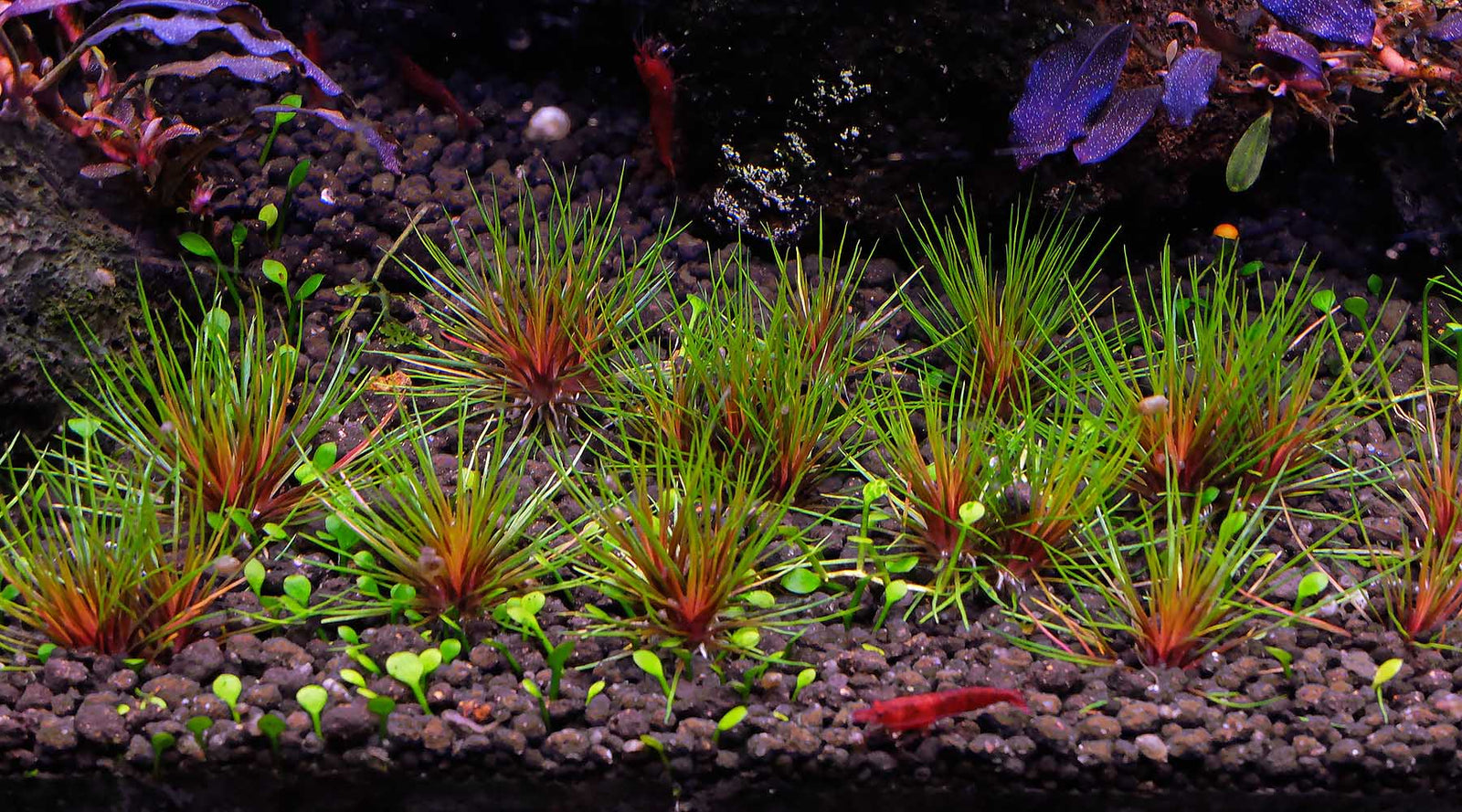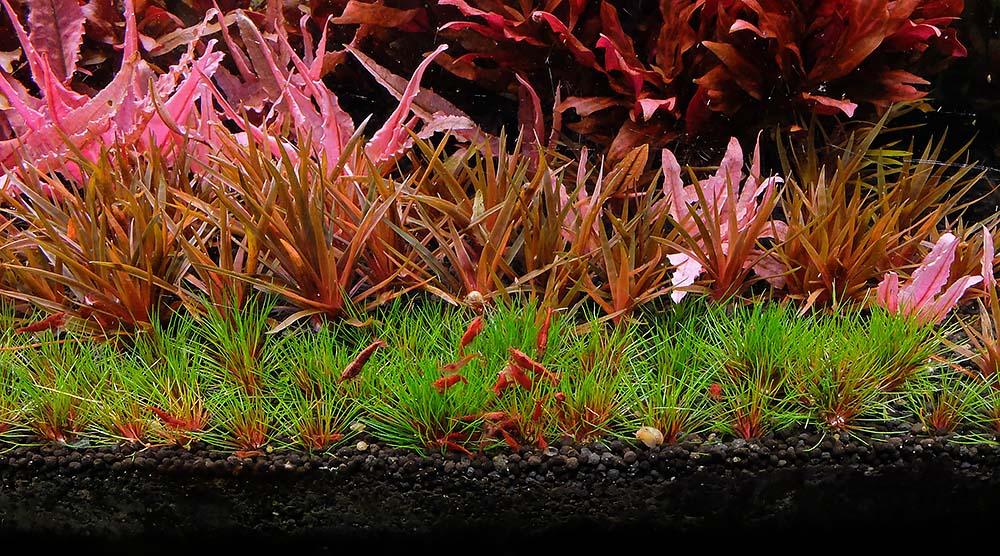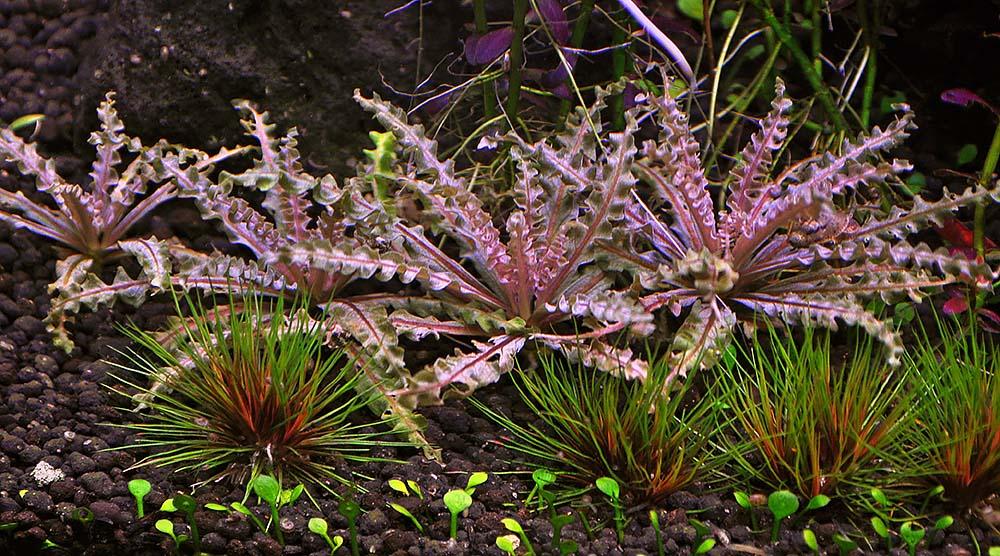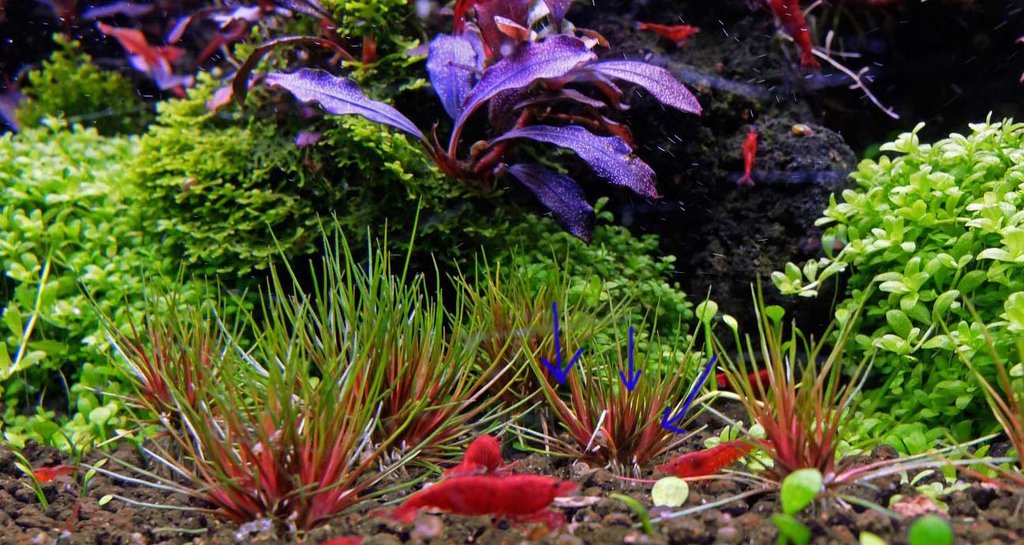
Centrolepis Drummondiana originates from Australia and has been around the hobby for many years. It is commonly, erroneously, labeled as “Eriocaulon Blood vomit” or “Trithuria blood vomit” in the trade. Later on the name was changed to Trithuria lanterna. However, recently (2019) botanists have yet changed their mind and now its classified as Centrolepis Drummondiana. The word “Blood vomit” comes from direct translation of the Chinese trade name “吐血”, and is probably its most recognizable trade name.
Blood vomit is a small, foreground plant. The leaves are green with a reddish base, making it an attractive dual tone foreground plant. The submerged forms are relatively short with adult plants around 1 to 1.2 inches tall. It grows deep roots which can be longer than the leaves. Due to its relative difficulty, it is not grown by many aquarists but is usually easy to find commercially. It is farmed emersed in some plant nurseries and tissue culture versions can be found in Asia.
Relative size as compared to adult Neocaridina shrimp, with a row of red Eriocaulon quinquangulare behind it, followed by the pink leaves of Cryptocoryne flamingo and the dark red leaves variegated Alternanthera reneckii (AR) in the background. Because it is short and demanding, it is not so often used in aquascaping as it is easily out-competed by faster growing plants. One attractive aspect of Blood vomit as a foreground plant is that it maintains its short height and does not spread without propagation.
It grows well at steady pace in the aquarium as long as light and CO2 are at good levels; under strong lighting(100+ umols)/CO2 and rich substrate, the plant doubles in mass roughly every month. However, it deteriorates slowly rather than rapidly if growth requirements are lacking, which can be quite deceptive to inexperienced aquarists as it can be difficult to discern whether its growth requirements are satisfied until it is too late. This is one of the main challenges in its cultivation. In cases where there is quick melting – this usually indicates issues with water parameters or poor stock.
This plant should not be shaded. It grows very well in ammonia rich aquasoils (or root tabs with ammonia). It is sensitive to KH and should be kept in low alkalinity water. (1-2 KH is ideal). As a short plant – it’s important to direct flow/CO2 to the substrate zone. Failure to grow this plant (apart from its soft water requirements) is most commonly due to poor CO2 control and weak lighting.
One can grow this plant aside plants that prefer hard water (such as Pogostemon helferi ‘red’ show here) by raising the tank’s GH but keeping the KH low.
It grows in a rosette format, and does not produce runners like other foreground plants. To propagate this plant, large rosettes can be split into several smaller portions. (either with a razor or delicate fingers). In some specimens there maybe clear separation of axillary buds, separating these buds is easy.
Centrolepis Drummondiana has a significant root system. In this specimen, you can see the separation of axillary bud (the leaves converge at two different points) – the plant is ripe for splitting (blue line).
Healthy adult specimens are robust and take shipping well. It acclimatizes easily to new environments as long as its growth requirements are met (chiefly enough light/CO2, and low KH).
Nitrate limitation can increase the redness in Blood vomit; the reddish portion at the base extends further towards the tips. The leaves can be vulnerable to algae. However, it seems quite resilient to Excel/H2O2 and takes spot treatment well.
key success factors
- Low KH (3 dKH and below)
- Good amounts of light and CO2 at the substrate level
- Grows fast in ammonia rich aquasoils
- Prevent larger, faster growing plants from shading it (even HC can smoother it over time)
how to get it redder
- Stronger lighting
- Good growth parameters with nitrate limitation. However, N limited plants are less robust and grow more slowly
buying guide
- Healthy plants should feel stiff to the touch rather than soft. Leaves should be erect rather than limp. Avoid mushy plants at all cost – weak plants will find it more difficult to transition to the new tank environment.
- Roots should be bright white rather than brown.
- Larger plants are more robust
propagation
- Split large specimens manually or divide the plant when separate axillary buds start to appear.
- Avoid dividing into too small portions. (see below)
Even in this young sample you can start seeing the separation of different growth buds (Blue arrows); the hint is where leaves converge at slightly different points. This is the minimum size plant that I would split. I highly recommend splitting plants when they are larger – larger portions are more robust and take splitting better
This is a video link on how to propagate blood vomit



